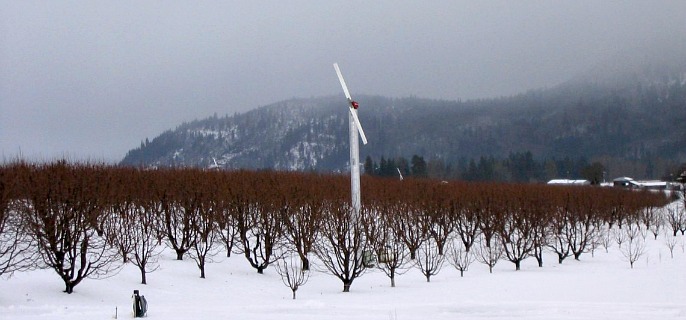
PHOTO COURTESY OF ODA
A snippet of winter weather has greeted Oregon the first week of December. Those who rely on irrigation during the growing season hope it’s a sign of a colder, wetter winter that results in a strong mountain snowpack.
Whether the state enjoys a winter wonderland in the months to come is still in doubt, but there are some reasons for optimism.
“We’ve had a good start to our water year in terms of precipitation, especially in Western Oregon, but our mild temperatures don’t bode well for accumulating snow,” says Margaret Matter, water resource specialist with the Oregon Department of Agriculture. “For farmers who irrigate, 2017 will depend on whether we get cooler temperatures and continued precipitation over the next few months.”
A mass of warm water in the Pacific Ocean, often referred to as “the blob”, has heavily influenced West Coast weather conditions in past years, leading to warmer temperatures. Although the blob dissipated a bit last year, it appeared to reconstitute this summer and fall. New evidence suggests it’s breaking up again, which could result in cooler temperatures for Oregon over the winter months.
If we can maintain those cooler temperatures into February, we have a better chance of having a strong snowpack with snowmelt runoff we can capture in the reservoirs and use for irrigation later on in the summer,” says Matter.
Two years ago, a majority of Oregon battled drought conditions, largely due to inadequate winter snowpack leading into 2015. This past winter, the snowpack returned to more normal levels, exceeding the average in some areas of the state. That led to some optimism that 2016 would be good for irrigators. Unfortunately, it turned warm earlier than usual. Not only did that rapidly melt the snowpack sooner than desired, it moved up the growing season for Oregon farmers. By March, crops were growing with some already needing water.
“Our peak stream flows were pretty much gone early in the year, so we didn’t get to store as much water as usual,” says Matter. “That was on the heels of a bad water year in 2015 that left reservoir storage low to begin with.”
A cooler late spring and early summer helped a bit, but Oregon has been left with a strong need for improved conditions. That only happens if cold and wet conditions lead to a healthy snowpack.
As of this week, measurements taken by USDA’s Natural Resources Conservation Service (NRCS) indicate the usual mixed bag of results. Precipitation, mostly in the form of rain, has generally been plentiful across Oregon. Since the current water year began on October 1, nearly all areas of the state have recorded precipitation well above average. The Rogue/Umpqua Basin is at 151 percent of average, the Willamette at 138 percent of average. East of the Cascades, Klamath Basin is at 134 percent of average, Upper Deschutes/Crooked 132 percent of average, Lake County 127 percent of average, Umatilla 123 percent of average, Malheur 118 percent of average, Grand Ronde 119 percent of average, and John Day at 116 percent of average. Only Owyhee, at 96 percent, and Harney, at 94 percent, are below average for precipitation.
The snowpack, measured in snow water equivalent, paints a different picture. Only the Hood River Basin, Willamette and Rogue/Umpqua are currently above average. All other basins are lagging behind with Owyhee, at 55 percent of average, and Harney, at 50 percent of average recording the lowest levels in the state. There is plenty of time to bring up the percentage in the days, weeks, and months ahead. It’s important to remember that Oregon’s diverse topography makes it hard to paint the entire state with one weather brush when it comes to forecasting winter weather. Still, southeastern Oregon remains the area of most concern for now.
It won’t be until April, perhaps even later, before anyone can truly determine what kind of water year 2017 will be. Even well-reasoned forecasts can change.
Farmers and ranchers know the drill – hope for the best but prepare for something less.








